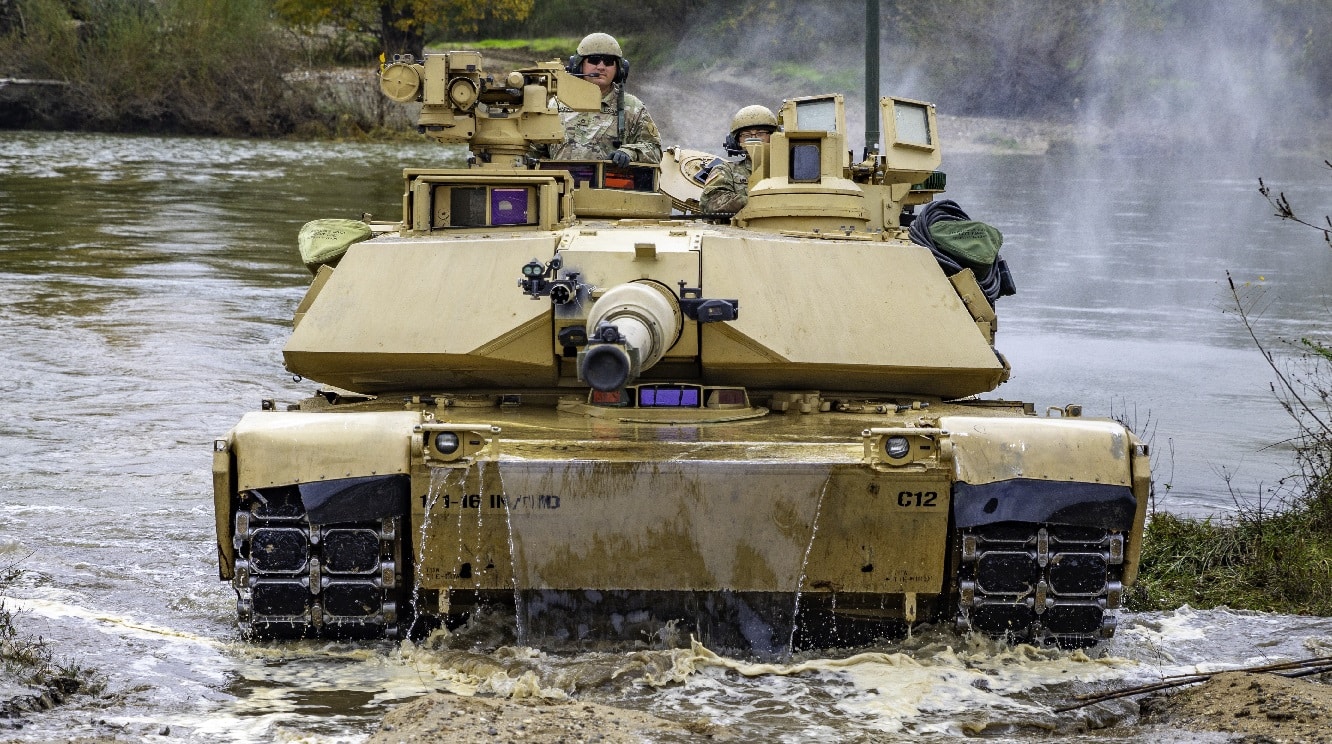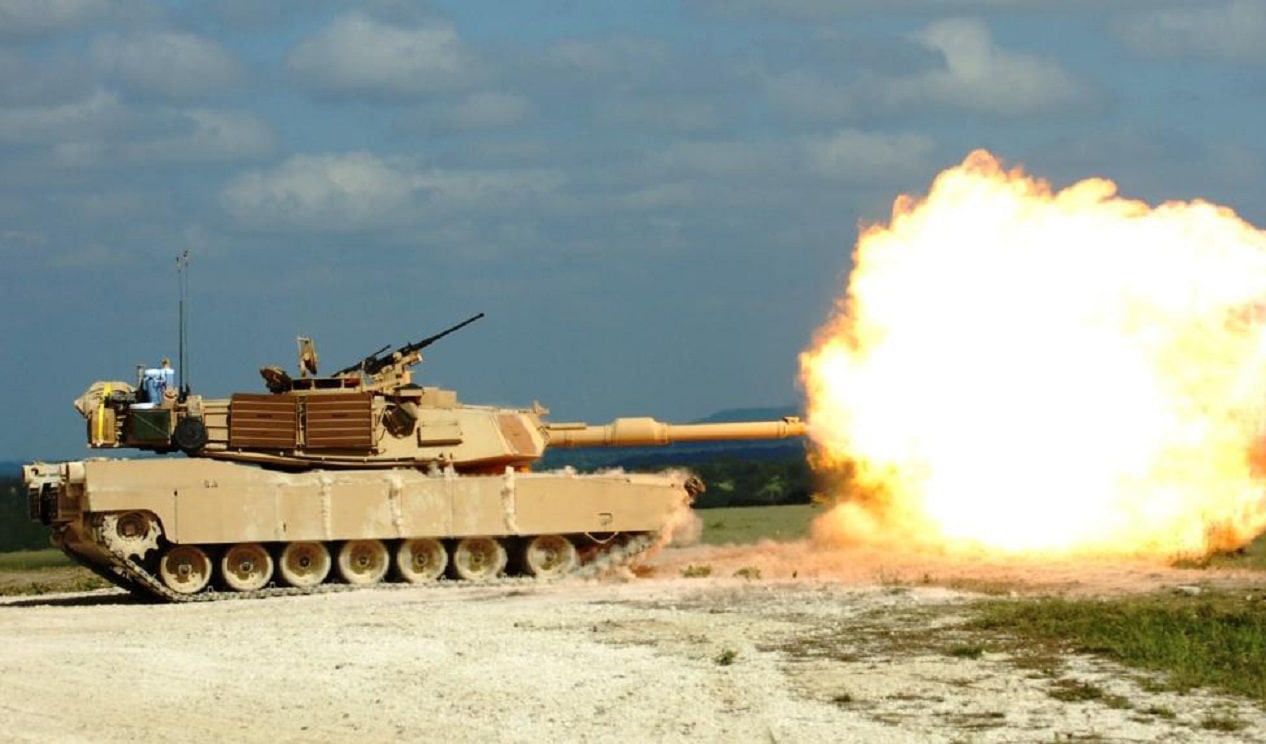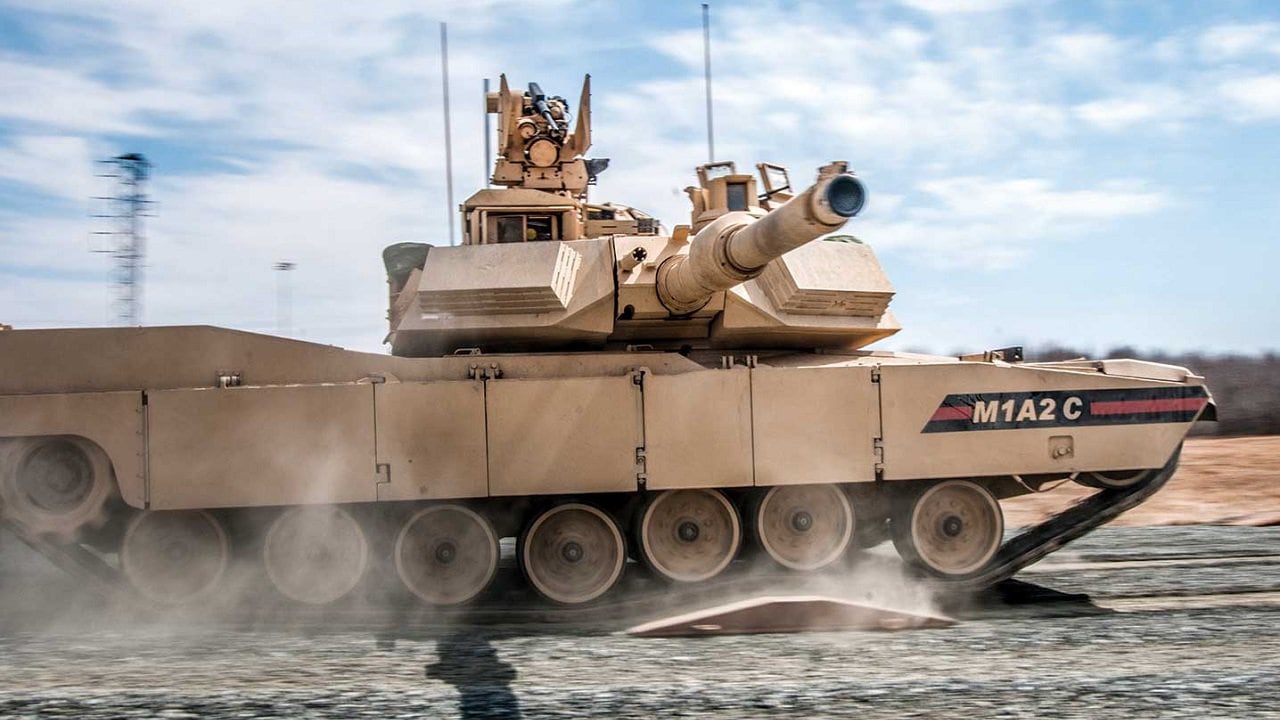Article Summary: The arrival of M1 Abrams tanks in Ukraine was met with high expectations, but after a year in combat, the results have been mixed. The U.S. provided 31 M1A2 Abrams tanks, but battlefield conditions, Russian drones, and anti-tank weapons have taken their toll—reportedly knocking out half of them.
Key Point #1 – Ukrainian crews have attempted to improve survivability with additional armor, but requests for more reactive armor from the U.S. have gone unanswered.
Key Points #2 – Now, with reports that Washington considers the Abrams “not useful” in Ukraine’s fight, the future of U.S. tank support remains uncertain. Will more Abrams be sent, or is this the end?
Ukraine’s M1 Abrams Experiment: What Went Wrong?
When the war in Ukraine began, among the immediate cries for help from Kyiv was for the donation of western Main Battle Tanks (MBT) that would present a formidable counter to the advanced Russian Uralvagonzavod (UVZ) T-90M models that the Russian army was fielding.
Ukraine’s allies responded in time – Germany and others delivered various models of the KMW Leopard II, the UK with different variants of the Challenger, and bringing up the rear (which has been the case for much of the war) was the US with the famous M1 Abrams.
Initial deliveries were from Australia for 49 of the M1A1 models and finally the US with 31 M1A2 Abrams.
Ukraine’s elite 47th Mechanized Brigade are the only operators of the former-US models, although the road from the promised donation was a long one.
According to reports coming back from Ukraine, US contractors required several months of work to replace the M1’s normal depleted-uranium armor with a substitute, which is thought to be a mix of tungsten and other materials. (There is a US policy that forbids export of depleted uranium armor due to the material being under control of the Department of Energy, which bars its export.)
Delivery at Last of M1 Abrams Tanks for Ukraine
The Ukrainian tank crews also required several months of training to operate the complex platform, which is far more computerized and equipped with high-grade sensors and fire control systems not found on most Ukrainian MBTs.
They were eventually delivered to Ukraine in the Autumn of 2023 and were used to equip a brigade, the 47th Mechanized.
The M1 Abrams was combined with three battalions of the M2 Bradley Infantry Fighting Vehicles (IFV) to create a combined arms-structured unit similar to US-NATO formations.
These tanks finally saw combat in February 2024 – one year ago – a full 13 months after the US had pledged their donation.
This was also about the same time that Russian units began to press relentlessly against Ukrainian units in the Eastern Donbas region.
Combat has been raging in this part of the Eastern region for months. According to Ukrainian officials and officers fighting in the region, Moscow has two objectives – one tactical and another political.
The tactical objective is to take control of Pokrovsk, which would be the key to seizing the entire region and making it part of Russia. Control of the Pokrovsk itself, which the Russians call “the gateway to Donetsk,” would allow the Russian army to disrupt Ukrainian supply lines along the eastern front, allowing it to move on and capture Chasiv Yar.
The strategic objective is that Moscow now wants to take control of as much Ukraine territory as possible to be in the best possible negotiating position now that the Donald Trump Administration is pushing to an end to the fighting.
Local Improvements on Abrams Tank
The Ukrainians have been trying to improve the survivability of their M1s by adding their reactive armor and anti-drone cages to protect them in the unique conditions of the battlefront in Ukraine.
One of the major problems with the M1s is that the Ukrainians have been asking for but not receiving the additional add-on armor from the US. The M1s sent to Ukraine’s are fitted with the standard M-19 Abrams Reactive Armor Tiles on the sides of the hulls, but there is no reactive armor on their turrets.
“We as a crew and as a battalion in general would like from our American partners to provide us with dynamic armor,” said one Ukrainian tanker speaking to US media, “so that we have not only the flanks protected, but also the turret.”
End of the Experiment
Partly due to the intensity of the combat, partly due to Russian drones and anti-tank guided missiles (ATGM) several of the M1s have been lost to combat.
It is estimated that as many as half of the original 31 have been destroyed, captured or are out of action.

A U.S. Army M1 Abrams tank crew with Charlie Company “Bandidos,” 1st Battalion, 16th Infantry Regiment, 1st Armored Brigade Combat Team, 1st Infantry Division successfully crosses the Nestos River during wet-gap crossing operations as part of Olympic Cooperation 2021 in Xanthi, Greece, Nov. 8, 2021. Olympic Cooperation allows participating forces to conduct rigorous training in realistic training environments with NATO allies and partners to ensure they are ready and lethal. (U.S. Army photo by Cpl. Max Elliott/RELEASED)
It is now assumed that there will probably be no more M1 Abrams sent to Ukraine unless there is a policy change. In a report from the waning days of the Biden Administration, now-former National Security Advisor Jake Sullivan is said to have concluded that M1 Abrams was “not useful” for Ukraine’s war effort.
When asked whether or not the Biden administration could have more adequately and effectively prepared Ukraine for offensive operations against Russian forces, Sullivan pointed to the Abrams as a kind of experiment that revealed that not all American weapons have the desired effect on the balance of power theatre.
“When it comes to Abrams tanks, we sent Abrams tanks to Ukraine…,” he explained. “These Abrams tank units are actually undermanned because it’s not the most useful piece of equipment for them in this fight.”

M1 Abrams. Image: Creative Commons.
About the Author: Reuben F. Johnson
Reuben F. Johnson is a survivor of the February 2022 Russian invasion of Ukraine and is now an Expert on Foreign Military Affairs with the Fundacja im. Kazimierza Pułaskiego in Warsaw. He has been a consultant to the Pentagon, several NATO governments and the Australian government in the fields of defense technology and weapon systems design. Over the past 30 years he has resided in and reported from Russia, Ukraine, Poland, Brazil, the People’s Republic of China and Australia.

